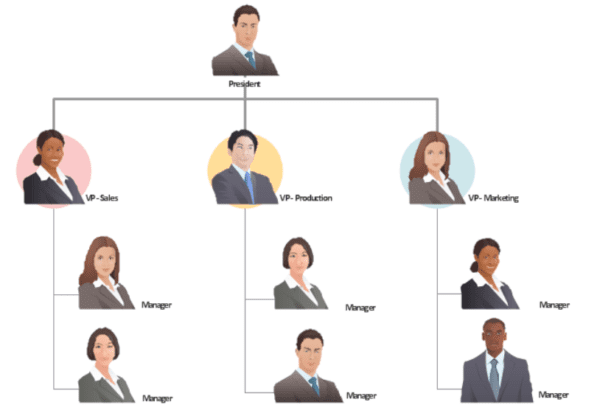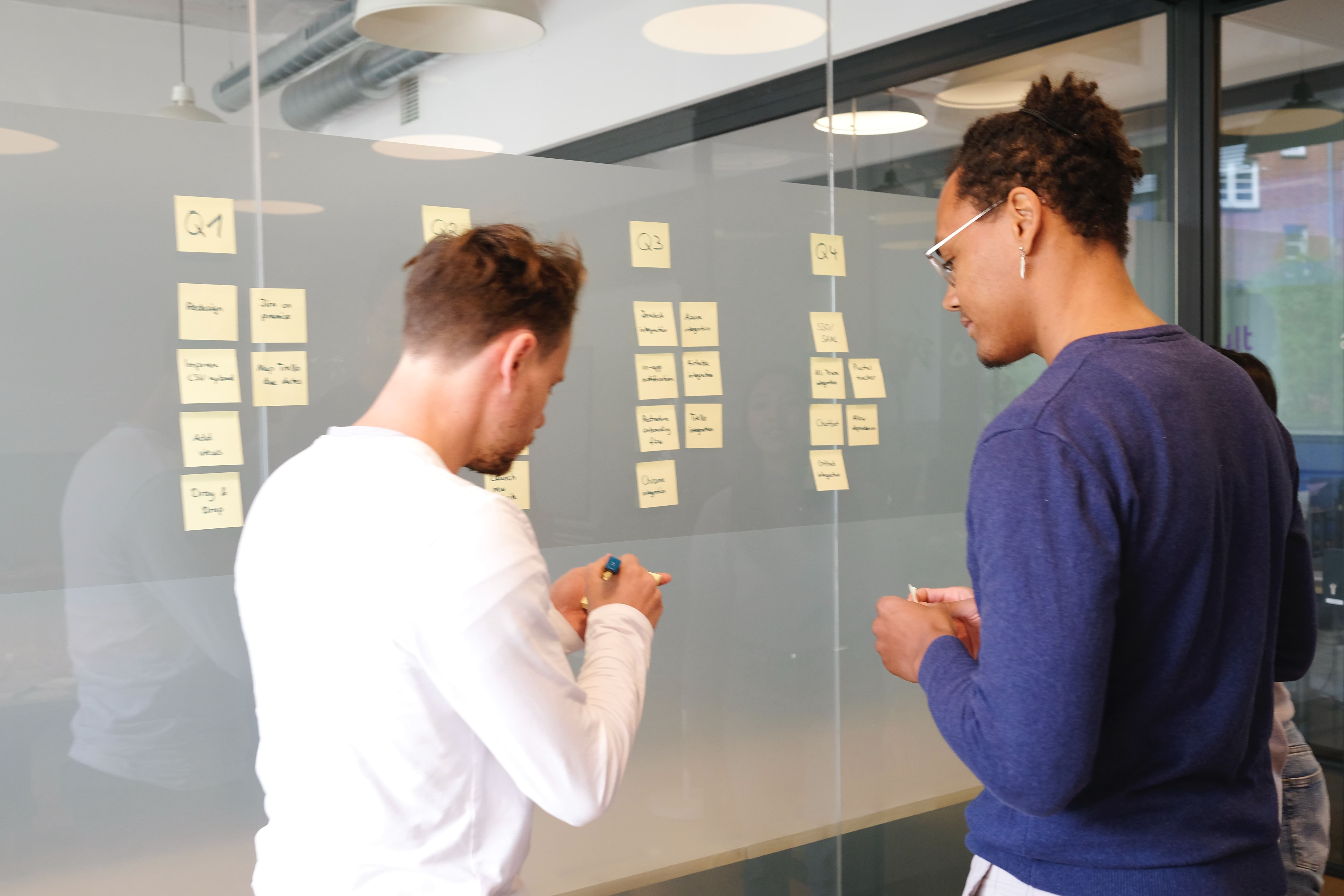Five best efficient human resources models nowadays
In the digital era, human resource management plays an important role in every business. An effective human resource management model will enable managers to optimize work productivity, accomplish set goals, and grow the business.
Human resource management model is all activities of an enterprise to attract, build, develop, evaluate and retain high-quality human resources.
Depending on the size and development of the business, the managers will build different models. This requires many elements, skill and ingenuity.
Let’s explore with Bemo the 5 human resource management models below that have been applied successfully in many businesses.
Table of Content
1. GROW – Human Resource Management Model

The GROW model helps managers to give clear directions and goals for employee development. With the established roadmap, the staff can easily grasp the goals and current situation of the business from which to have an appropriate implementation plan. The word GROW stands for: Goal_Reality_Options_Obstacles_Way forward (Will). To be able to apply this model, enterprises need to perform 4 steps corresponding to each of the above letters:
- Step 1: Goal – Set goals
These are the goals that the manager wants the enterprise to achieve. When setting goals, managers should follow SMART criteria to select the right goals for the business. SMART criteria are understood as:
S – Specific: easy to understand
M – Measure: can be measured
A – Attainable: achievable, feasible
R – Relevant: practicality and relevance to other goals
T – Time-bound: Specific completion time
- Step 2: Reality – Assess the actual situation at the enterprise.
The purpose of this step is for managers to identify and evaluate the business’ overall situation, its current position in comparison to its set goals.
- Step 3: Options/Obstacles – Provide solutions suitable for the business.
From the assessment in step 2, the manager will analyze the possible difficulties and risks, select and offer appropriate solutions in the implementation process to achieve the goal.
- Step 4: Way Forward – Be mentally prepared and ready to perform.
In this step, both the manager and the staff are ready, mentally for a new journey, jointly implementing the plan set out and moving towards the finish line.
With just four simple steps above, GROW helps businesses to improve performance and reach their goals by creating a tight structure in their organization and human resources.
2. Harvard Human Resource Management Model
A Harvard Human Resource Management Model, developed by Beer et al. in 1984, creates a new era in human resource management. The model is based on the factors that are often affecting workers, namely:
- HR flows – recruitment, selection, placement, evaluation, contract termination.
- Reward system: welfare and reward policies to motivate employees.
- Work systems: the applications, software, and work systems of each enterprise.
Managers, employees, and relevant people must participate in this model during the process of implementing, implementing, and evaluating human resources policies. In the model, a strong focus is placed on building relationships between colleagues and partners, as well as reinforcing the role of managers in partnering with employees.
In addition, managers need to pay attention to employee commitment, market competitiveness, cost-effectiveness and productivity when formulating HR policies for businesses.
This model offers a more comprehensive approach to human resource management and shows many different levels of results, but there is still a weakness that there is no specific process for planning that makes employees Even though businesses understand, they are still confused about how to implement it.
3. Human resource management model based on Maslow’s theory
Maslow’s theory is applied in many fields such as human resources, marketing… In human resource management, enterprises use Maslow’s pyramid to identify employee needs and plan appropriate management plans.
Maslow’s theory is designed in a pyramid shape with 5 floors, including:
- Bottom of the tower: Essential needs.
In human resource management, the bottom of the pyramid is understood as the employee’s desire to have a job, maintain life and daily living needs. Therefore, manegers need to have a salary, bonus and welfare policy suitable for each person.
- Level 2: Safety needs.
On this floor, employees want to meet the needs of health and safety, a healthy environment to work,… In order to ensure a healthy working environment, comply with occupational safety standards, and have reasonable overtime regulations, enterprises need labor contracts and insurance policies for employees.
- Level 3: Social needs.
With this need, managers should create conditions for employees to connect and exchange with each other and between parts of the business, or regularly organize teambuilding sessions.
- Level 4: The need to be respected.
Anywhere, employees always want to be dedicated and contribute their own ideas for the development of the enterprise. Additionally, job promotion plays an important role in motivating employees besides recognition of competence. To do this, managers need to build a specific development roadmap, clear and reasonable evaluation and reward policies.
- The 5th floor is also the top of the tower with the highest need of employees to express themselves.
Last but not least, this is a critical factor in retaining employees. A company should provide employees with opportunities to express themselves, promote creativity, and develop their abilities.
According to this model, managers will understand the needs of employees and have appropriate policies to help manage human resources effectively, develop a highly specialized team, thereby increasing profits for the business.
4. Human resource management according to William Ouchi model (theory Z)

This is one of the famous human resources management models from Japan from the 70s, developed by William Ouchi. According to Theory Z, employee loyalty to the organization is achieved through creative activities, trust, and care, which create conditions for employees both inside and outside of work.
This governance model requires the following requirements:
– It is important for management to take the time to understand the work situation of employees, empower them to participate in decision-making, and give them the ability to voice their opinions.
– Managers need to have skills in operating, motivating employees, as well as receiving and listening to views to understand their subordinates.
– Employees’ regimes must be ensured so that they can maintain their morale and bring high efficiency at work.
– Employee welfare must be reviewed regularly to create a feeling of comfort, fairness and to motivate employees to make long-term contributions.
– Provide comprehensive, clear and delicate employee evaluations appropriate to each situation.
This is the way the Japanese use to effectively manage human resources and bring success to businesses from the 70s to the present.
5. Horizontal management model

The functional management model, also known as horizontal governance, is a model used quite commonly in SMEs.
In this model, human resources are divided into departments and operate according to their own functions, managed independently of each other, and the head of the department will work directly with upper management. Specifically:
– The management level of each department receives tasks from the leadership.
– The tasks are divided into correct positions, functions and implementation of work.
– The management level must ensure that the work is carried out in accordance with the strategy and orientation of the enterprise.
With this model, the heads of each department and department will be responsible for reporting to the leadership, thereby helping enterprises ensure their goals and activities follow the set plan.
The above are 5 well-known human resource management models that are applied by many businesses in their organizations. In general, each model is developed to serve many different purposes, and depending on the size and corporate culture, managers will consider, skillfully combine and build a suitable model for its business.
An effective human resource management model will help businesses achieve stability and growth. Bemo – a comprehensive digital transformation solution combined with the above models will help enterprises reduce pressure on leaders as well as support more effective human resource management. Please contact us for advice on the right solution for your business.














